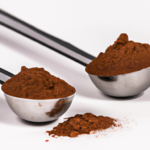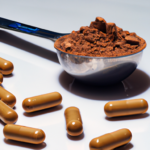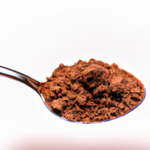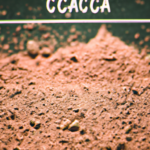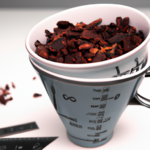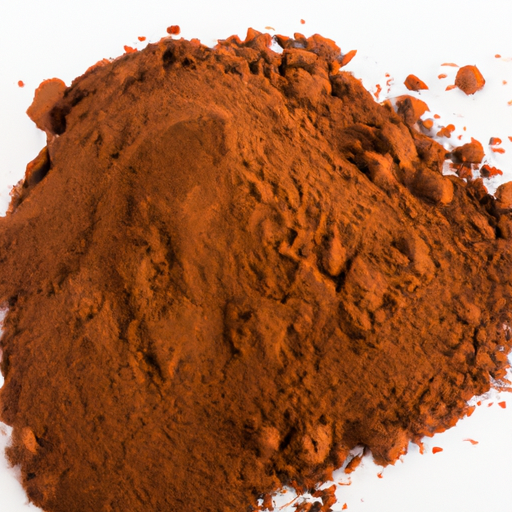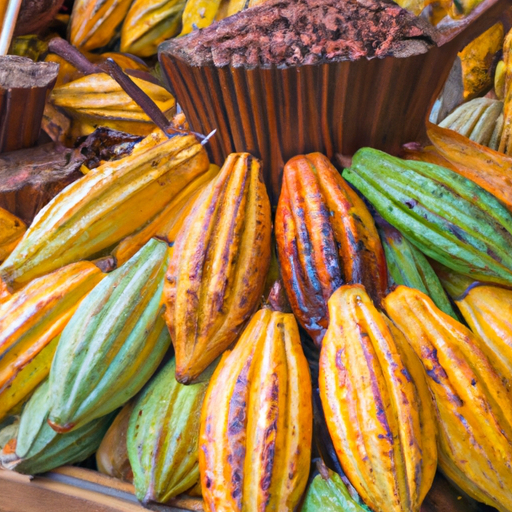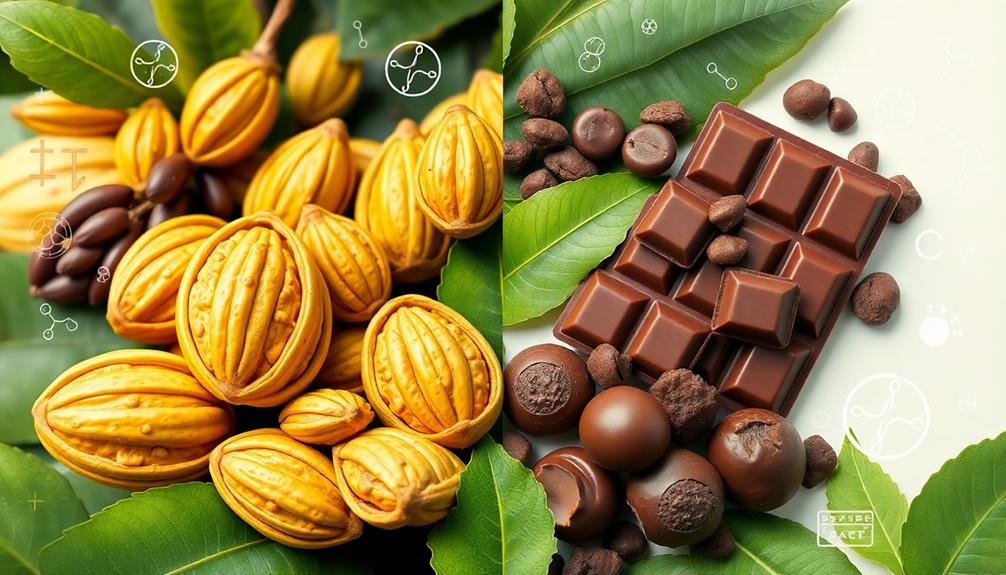I often ponder as a chocolate enthusiast how much raw cacao is ideal for daily consumption. Raw cacao has become increasingly popular for its myriad health benefits, yet determining the appropriate amount can be a bit perplexing.
In this article, we’ll explore the recommended daily intake of raw cacao and delve into its nutritional profile. We’ll also discuss the ways you can incorporate raw cacao into your diet and touch on any potential risks or side effects.
Additionally, we’ll compare raw cacao to processed chocolate and examine the latest research and studies on this delectable treat. To ensure accuracy, we’ll consult expert recommendations and opinions.
So, if you’re curious about the ideal amount of raw cacao to consume each day, keep reading to find out all the evidence-based information you need.
Key Takeaways
- Experts recommend incorporating a moderate amount of raw cacao into daily diet.
- The recommended daily intake of raw cacao varies based on age, health condition, and dietary needs.
- Consuming 1 to 2 tablespoons of raw cacao powder or nibs per day is a general guideline.
- Excessive consumption of raw cacao may lead to negative side effects such as increased heart rate, digestive issues, allergic reactions, and jitteriness.
The Health Benefits of Raw Cacao
You’ll be amazed at the incredible health benefits you’ll experience when you indulge in just the right amount of raw cacao every day!
Raw cacao is not only a delicious treat but also a nutritional powerhouse. It is packed with antioxidants, which help to fight off free radicals and reduce the risk of chronic diseases such as heart disease and cancer.
Additionally, raw cacao contains minerals like magnesium, iron, and calcium, which are essential for maintaining healthy bones and muscles.
Moreover, raw cacao is known to boost mood and improve cognitive function due to its high content of flavonoids and phenethylamine.
While there is no specific recommended dosage for raw cacao, it is generally safe to consume up to 2 tablespoons per day. However, it’s important to note that raw cacao can be used in various alternative ways, such as in smoothies, desserts, or as a sprinkle on top of oatmeal or yogurt.
Now let’s explore the recommended daily intake of raw cacao.
Recommended Daily Intake of Raw Cacao
Indulging in the divine pleasure of raw cacao every day is like a blissful dance of cocoa fairies on your taste buds. Not only does it satisfy your cravings for something sweet, but it also offers numerous health benefits.
When it comes to the recommended daily intake of raw cacao, it is important to consume it in moderation. While there is no set limit, experts suggest keeping it to around 1-2 tablespoons of raw cacao powder or 1-2 small squares of raw cacao chocolate per day. This amount provides enough of its antioxidant-rich compounds, such as flavanols and polyphenols, to support heart health, improve cognitive function, and boost mood. However, consuming excessive amounts may lead to unwanted side effects like digestive issues or caffeine sensitivity.
Moving forward, let’s explore the nutritional profile of raw cacao.
Nutritional Profile of Raw Cacao
In examining the nutritional profile of raw cacao, it’s important to consider both macronutrients and micronutrients.
Raw cacao is a rich source of macronutrients such as fiber, protein, and healthy fats. These macronutrients are essential for overall health and well-being.
Additionally, raw cacao is packed with micronutrients like iron, magnesium, and antioxidants. These micronutrients play a crucial role in supporting various bodily functions and promoting optimal health.
Macronutrients
Raw cacao should be included in your daily diet because it is rich in macronutrients. These macronutrients are essential for maintaining overall health. Raw cacao has ideal macronutrient ratios for a balanced diet. There are four important macronutrients found in raw cacao.
-
Protein: Raw cacao contains a good amount of protein, which is important for building and repairing tissues.
-
Healthy Fats: Raw cacao is packed with healthy fats, such as omega-3 fatty acids, that are beneficial for heart health.
-
Carbohydrates: Raw cacao provides a good amount of carbohydrates, which are the body’s main source of energy.
-
Fiber: Raw cacao is also a great source of fiber, which aids in digestion and helps maintain a healthy weight.
Including raw cacao in your daily diet can provide you with these essential macronutrients that contribute to overall health.
Moving on to the next section, let’s explore the micronutrients found in raw cacao.
Micronutrients
Boost your well-being by incorporating raw cacao into your daily routine, as it is a treasure trove of micronutrients that can nourish your body from the inside out. While macronutrients like carbohydrates, proteins, and fats provide the body with energy, micronutrients are essential for maintaining overall health. Raw cacao is particularly rich in micronutrients such as iron, magnesium, zinc, and antioxidants. These nutrients play a vital role in various bodily functions, from supporting the immune system to promoting healthy skin and reducing oxidative stress. To give you a better idea of the micronutrient content in raw cacao, here’s a table showcasing its key components:
| Micronutrient | Amount per 100g |
|---|---|
| Iron | 13.9mg |
| Magnesium | 499mg |
| Zinc | 6.8mg |
| Antioxidants | High |
Incorporating raw cacao into your diet can be an enjoyable and beneficial way to boost your micronutrient intake. Now, let’s explore some creative ways to incorporate raw cacao into your daily meals and snacks.
Ways to Incorporate Raw Cacao into Your Diet
To add some excitement to your daily routine, try sprinkling a generous amount of raw cacao into your morning smoothie or your afternoon yogurt bowl. Not only will this give your taste buds a delightful treat, but it also allows you to incorporate the many health benefits of raw cacao into your diet.
When it comes to desserts, you can explore various recipes that incorporate raw cacao, such as raw cacao truffles or raw cacao brownies. For a refreshing and energizing drink, you can whip up a raw cacao smoothie using ingredients like bananas, almond milk, and a dash of honey. These recipes are not only delicious but also provide a good dose of antioxidants and essential minerals.
However, it’s important to be aware of potential risks and side effects associated with consuming raw cacao.
Potential Risks and Side Effects
When incorporating raw cacao into your diet, it is important to be cautious of potential risks and side effects. While raw cacao is rich in antioxidants and can provide various health benefits, it is crucial to consume it in moderation. Excessive intake of raw cacao can lead to potential health risks. These risks include increased heart rate, digestive issues, and migraines. Furthermore, raw cacao contains caffeine and theobromine, which can have stimulating effects on the body. Considering the long-term effects of consuming raw cacao regularly is also important. Some studies suggest that high intake of raw cacao may contribute to mineral deficiencies and interfere with nutrient absorption. Therefore, it is advisable to consult with a healthcare professional before making any significant changes to your diet.
Moving on to the subsequent section, it is important to understand the differences between raw cacao and processed chocolate.
Raw Cacao vs. Processed Chocolate
Indulging in processed chocolate is like taking a joyride through a sugary wonderland. But beware of the hidden pitfalls that may lurk beneath its tempting facade. While processed chocolate may satisfy your sweet tooth, it pales in comparison to the health benefits of raw cacao.
Raw cacao is the purest form of chocolate, made from unroasted cocoa beans. It is packed with antioxidants, minerals, and flavonoids that can improve heart health, boost mood, and enhance cognitive function. Plus, raw cacao is incredibly versatile and can be used in a variety of delicious recipes, such as smoothies, energy balls, and desserts.
So, instead of reaching for processed chocolate, why not try incorporating raw cacao into your daily routine for a healthier indulgence? Now, let’s delve into the research and studies on raw cacao to further explore its incredible properties.
Research and Studies on Raw Cacao
Immerse yourself in the rich world of raw cacao research, where tantalizing studies uncover the potential health benefits of this pure form of chocolate. Here are three intriguing findings from recent research on raw cacao:
-
Cardiovascular health: Numerous studies suggest that raw cacao can improve heart health by reducing blood pressure, improving blood flow, and lowering cholesterol levels.
-
Cognitive function: Research indicates that the flavonoids in raw cacao may enhance cognitive function, including memory and attention.
-
Mood enhancement: Raw cacao contains compounds that can boost serotonin and endorphin levels, leading to improved mood and reduced symptoms of depression.
These research findings have significant health implications, suggesting that incorporating raw cacao into your daily diet could potentially promote cardiovascular health, enhance cognitive function, and uplift your mood.
Moving forward, let’s explore expert recommendations and opinions on the ideal amount of raw cacao to consume each day.
Expert Recommendations and Opinions
One interesting statistic reveals that experts recommend incorporating a moderate amount of raw cacao into your daily diet to fully experience its potential health benefits.
The recommended daily intake of raw cacao varies depending on individual factors such as age, health condition, and dietary needs. However, a general guideline suggests consuming around 1 to 2 tablespoons of raw cacao powder or nibs per day. This amount provides an adequate dose of antioxidants, flavanols, and other beneficial compounds found in raw cacao.
It is important to note that consuming excessive amounts of raw cacao may have potential health risks, such as increased heart rate, digestive issues, or allergic reactions. Therefore, it is crucial to find the right balance and listen to your body’s response when incorporating raw cacao into your daily diet.
Transitioning into the subsequent section about ‘conclusion: finding the right balance,’ it is essential to understand how to incorporate raw cacao in a way that promotes overall well-being.
Conclusion: Finding the Right Balance
In conclusion, finding the right balance when it comes to enjoying raw cacao is crucial. It is recommended to consume raw cacao in moderation, as excessive intake may lead to negative effects.
Additionally, it is important to listen to your body’s response and adjust your consumption accordingly, as everyone’s tolerance and sensitivity to raw cacao may vary.
Enjoying Raw Cacao in Moderation
To savor the benefits of raw cacao without overindulging, it’s essential to moderate your daily intake. Listening to your cravings and experimenting with different recipes can help you find the right balance. Raw cacao is a potent source of antioxidants, magnesium, and other beneficial compounds, but consuming too much can lead to negative side effects like jitteriness or digestive issues. To help you navigate your daily intake, consider the following table:
| Daily Raw Cacao Intake | Health Benefits |
|---|---|
| 1-2 tablespoons | Improved mood |
| 3-4 tablespoons | Increased energy |
| 5-6 tablespoons | Enhanced focus |
| 7-8 tablespoons | Cardiovascular health support |
| 9+ tablespoons | Potential negative effects |
Remember, this table is a general guideline, and individual responses may vary. Pay attention to your body’s response and adjust your consumption accordingly. Listening to your body will ensure you enjoy raw cacao’s benefits without going overboard.
Listening to Your Body’s Response
When enjoying the benefits of raw cacao, pay attention to how your body reacts. Adjust your intake accordingly. Listen to your body’s signals and find the right amount that works for you. Some people may be more sensitive and need to consume less, while others may handle a higher intake. Determine how much raw cacao you should eat a day by listening to your body. Watch out for negative reactions like headaches, jitteriness, or digestive issues. These may indicate that you’ve had too much. Conversely, feeling energized and experiencing a positive boost in mood may mean you’re consuming an appropriate amount. Experiment with different quantities and closely observe your body’s response. Remember, everyone is different, so what works for one person may not work for another.
Frequently Asked Questions
Does raw cacao have any negative effects on blood pressure?
Raw cacao can have negative effects on blood pressure due to its caffeine and theobromine content. These stimulants can cause an increase in blood pressure. It is important to consume raw cacao in moderation and monitor its impact on your blood pressure.
Can raw cacao be consumed by individuals with diabetes?
Raw cacao can be consumed by individuals with diabetes. It may have a positive effect on blood sugar levels and insulin sensitivity. However, it is important to monitor portion sizes and consult with a healthcare professional for personalized recommendations.
Is it safe to consume raw cacao during pregnancy?
Yes, it is safe to consume raw cacao during pregnancy. However, it is important to consume it in moderation. Raw cacao has been shown to have benefits for fertility, but excessive intake should be avoided.
What is the shelf life of raw cacao?
The shelf life of raw cacao varies depending on storage conditions. When stored properly in a cool, dark place, it can last up to two years. To extend its shelf life, ensure it is tightly sealed and protected from moisture.
How does raw cacao compare to other superfoods in terms of nutritional content?
Raw cacao is a nutritional powerhouse, packed with antioxidants, vitamins, and minerals. Compared to other superfoods, it stands out for its high levels of magnesium, iron, and fiber. Additionally, raw cacao has been known to promote healthy skin.
Is There a Recommended Daily Intake of Raw Cacao for Health Benefits?
The recommended raw cacao nibs consumption amount for health benefits is around 1-2 tablespoons per day. This superfood is packed with antioxidants, fiber, and essential minerals like magnesium and iron. Incorporating raw cacao into your diet can support heart health, improve digestion, and boost mood and cognitive function.
Conclusion
In conclusion, incorporating raw cacao into your daily diet can be a beneficial way to boost your overall health. While there is no set recommended daily intake, consuming around 1-2 tablespoons of raw cacao powder or nibs can provide you with a good dose of antioxidants, fiber, and essential minerals.
Interestingly, studies have shown that consuming raw cacao can improve mood and cognitive function due to its high content of flavonoids.
So go ahead and enjoy a guilt-free indulgence of raw cacao to reap its numerous health benefits!



